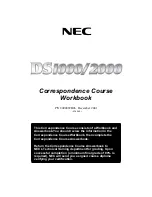
22
DH200 Manual
Rev 16.0
A number of built-in performance style options can be applied to hymn performances using a
one-, two- or three-digit style code. The position of each digit in the style code controls one
aspect of the hymn’s performance.
By “position” we mean the location of the digit within the number as it is written. For example,
the number “743” has a “7” in the “hundreds place”, a “4” in the “tens place”, and a “3” in the
“ones place”. The significance of each digit is explained in the tables that follow. The last digit
of the style to be entered into the Hymnal (in this case the “3” in the ones-place of the number
743) selects the sound combination. If there are two digits then the next-to-last digit (the “4” in
the tens place) controls the choice of arrangement. If there are three digits then the first digit
(the “7” in the hundreds place) selects the multi-verse choice. This numbering system was
devised to make it easy to explore and recall related style groups. Exceptions in the 80_ and
90_ series are noted in the Multi-verse and Drums table. If you press
STYLE
,
,
ENTER
the
Hymnal assumes you want Style 002.
The chosen option or options are applied when the
STYLE
button is pushed and the codes are
entered on the numeric keypad or remote control. Please take a look at the SOUND Preset code
and ARRANGEMENT Preset code tables listed on the next two pages to become familiar with
the options that are available.
Call up hymn MST 1711 and try the following three examples:
1. Enter "0" to have the pipe organ play all four parts at pitch. This example uses SOUND
Preset code 0. Choose styles ending with “0” (i.e. 10, 100, 220) if you want to play hymns
using only the pipe organ sound.
2. Entering the two-digit style "32" has two effects. The “3” in the tens place selects the
arrangement, with the melody up an octave, the soprano and alto playing the
ACC. 1
(Accompaniment 1) part, the tenor and bass playing
ACC. 2
, and the
BASS
down an
octave. The “2” in the ones place sets the tone of the sounds the voices use: flute for the
melody, choir on
ACC. 1
, strings on
ACC. 2
, and organ for the
BASS
. Other styles can be
related in different ways, depending on which digit they have in common. For example,
Style 30 uses the same transpositions (because it has a “3” in the “tens place”, the same as
style 32) but plays the parts using the organ sound (because it has a “0” in the “ones
place”). Style 22 plays the parts with different transpositions (because it has a “2” in the
tens place instead of a “3”) but uses the same flute/choir/strings/organ sounds (because it
has a “2” in the “ones place”, the same as style 32).
3. Three-digit styles select combinations of tone settings, background styles, ritards, and
transpositions. Enter "642" to have the flute play the melody, accompanied by choir,
drums, and pipe organ. The performance will gradually slow down (“ritard”) in the final
measures of the last verse. Looking at each digit one by one in style 642 tells us that
MULTI-VERSE Preset code 6, ARRANGEMENT Preset code 4, and SOUND Preset code
2 have been selected.
The performance styles are summarized in the three following tables.
8
Performance Styles
















































